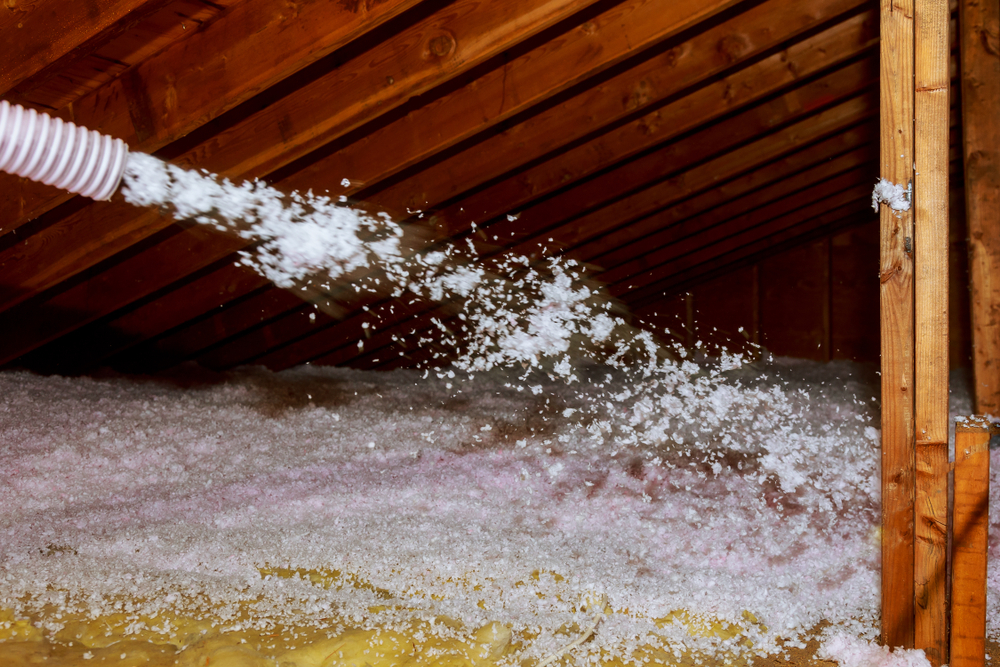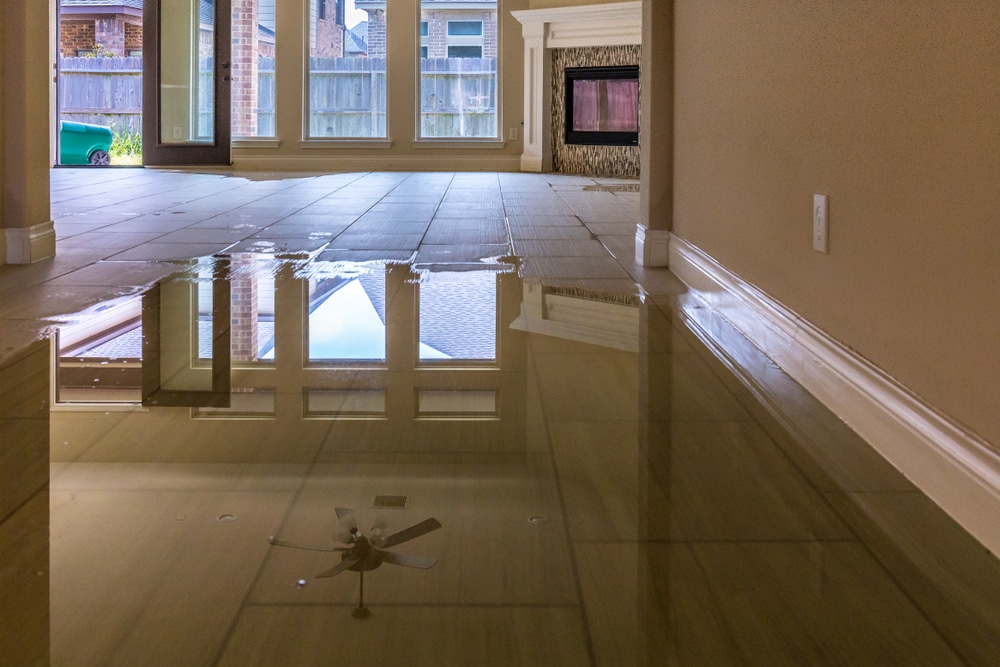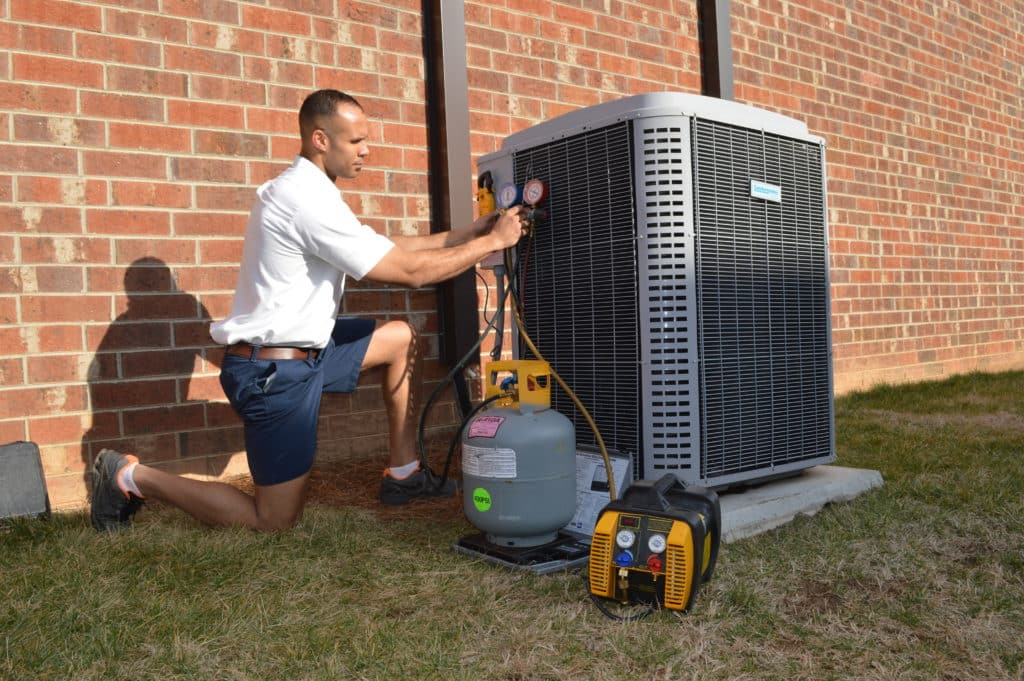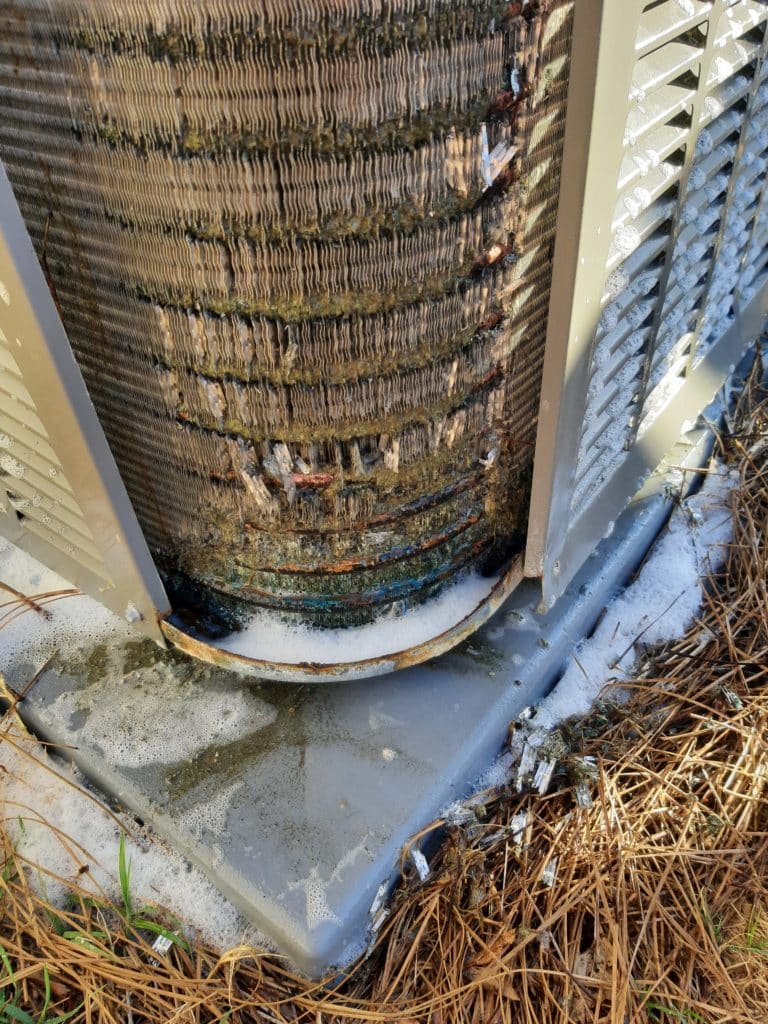Even the best heating and cooling system is gonna struggle to keep your home cozy if you don’t have proper insulation!
Attic Insulation Types
People usually assume their home temperature issues are because of a faulty furnace or air conditioner. They rarely think the problem has to do with their insulation. Sometimes, the problem is the type of attic insulation. Other times, it’s just that you don’t have enough insulation. Not sure what types of attic insulation there are or what makes some better than others? We’re here to clear up all your insulation questions!
What Is Blown Insulation?
This is our favorite!

Blown insulation is a great way to insulate your home. It’s made of fiberglass, which is a great material for insulating your home. When you call Morris-Jenkins out for new insulation, this is what we use. One of our experts will lead a tube from our machine outside to your attic. This tube allows us to blow insulation directly into your attic, filling in all the nooks and crannies until you’ve got a nice, thick layer of fluffy insulation!
Instead of manually placing insulation and leaving gaps, using material that’s not good for your family, or risking problems detecting roof leaks one day, blown insulation keeps your family comfortable without any of the risks or complications.
What Is Spray Foam Insulation?
Spray foam insulation is essentially a sprayable plastic full of glue and chemicals. When you spray it, the foam expands to cover cracks and gaps in your attic. The thought is that this will prevent heat or cooled air from escaping your home. It’s a less common choice for insulating attics, and for good reason.
This method is a bad idea! Not only is it flammable, it’s also full of chemicals like formaldehyde that you don’t want in your family’s home. But that’s not where the bad news ends! Spray foam insulation also makes it hard to see problems with your roof. When you use spray foam insulation, you’re adding it to the roof deck—this is where you’d spot any leaks or damage in your roof. With spray foam concealing your view of all that, you could have a roof leak and not know until it’s too late. And when it comes time to get a new roof, it’s gonna be really hard to do with the spray foam stuck to the wood ceiling joists. Overall, we recommend avoiding spray foam insulation!
Spray Foam Vs. Blown Insulation
Spray foam insulation has to be manually sprayed anywhere you want it. It’s a tedious way to insulate an attic! Instead, you can have Morris-Jenkins come out and blow in insulation. You can kick your feet up and relax, and we’ll get your attic insulated in a matter of just a couple hours! Not only that, but the blown insulation isn’t going to put nasty chemicals in your home like spray foam will, it won’t hide any future roof leaks, and it’ll do a much better job insulating your home than the spray foam.
What Is Cellulose Insulation?
Cellulose insulation is made of ground up newspaper sprayed with fire retardant. At first, this type of attic insulation is fine. However, just like your favorite pillow that flattens over time, cellulose insulation also falls flat. The material is heavy, and it doesn’t stay thick and fluffy like it should. Before you know it, you suddenly have way thinner insulation than you should. We see this kind of attic insulation all the time around the greater Charlotte area. Because it’s cheap, it’s a go-to for a lot of builders. Unfortunately, this type of attic insulation just doesn’t last!
Cellulose Insulation Vs. Blown Insulation
Cellulose insulation works in the short term, but blown insulation lasts forever! Over time, cellulose insulation flattens, leaving you with an ineffective, thin layer of shredded paper as insulation. Meanwhile, blown insulation is made of fiberglass, which stays thick and fluffy. You’ll have to replace/add to cellulose insulation, but you’ll never have to replace or add to blown insulation!
What Is Roll Insulation?
A lot of the time, when someone wants to put in their own insulation, they buy roll insulation, otherwise called insulation batts. It’s made out of fiberglass, which is a great way to trap heat or cooled air in your home! However, installing insulation batts has a couple downsides:
- You have to install it by hand. Not only is that a lot of work, but that pink, cotton-candy fluff is REALLY itchy!
- It leaves gaps/seams in coverage. Because it gets installed in pieces laid one next to another, there are gonna be gaps between the batts. It’s still a decent barrier, but it isn’t complete coverage.
We use roll insulation when we’re insulating floors from a crawlspace because it’s the best option to fit in a crawlspace. However, this isn’t the best attic insulation type.
Roll Insulation Vs. Blown Insulation
While both of these types of attic insulation are made out of fiberglass and do a great job keeping your home comfortable, roll insulation is gonna leave gaps/seams in coverage. This means it’s not as efficient at insulating as blown insulation in your attic.
What Is Radiant Barrier Insulation?
A radiant barrier—also known as a radiant heat shield—uses sheets of a highly reflective material to reflect radiant heat. This kind of insulation looks a lot like someone stapled aluminum foil all throughout their attic! It’s not useful (there’s actually no proof that it helps maintain the temperature of your home). Not only that, but because it covers your view of the underside of your roof, it’s just about impossible to tell if you have a leak before it’s too late. This attic insulation type is a waste of your time and money!
Radiant Barrier Vs. Blown Insulation
There’s nothing similar between these two types of attic insulation! When someone asks us the difference between radiant barrier vs blown insulation, we make sure to let them know radiant heat shields are only gonna cause them problems. They don’t even insulate anything! Blown insulation, on the other hand, is a great way to keep your home comfy (and energy efficient!).
Comfort Cloud by Morris-Jenkins
Comfort Cloud by Morris-Jenkins saves you money on your utility bills by making your heating and cooling system run more efficiently. High quality insulation like Comfort Cloud keeps the outside temperature outside and the inside temperature inside! Your HVAC equipment won’t have to run as often to regulate temperatures in your home, and that not only saves you money on monthly bills, but helps your system live longer.
Comfort Cloud by Morris-Jenkins is a permanent investment in your home. It isn’t something you’ll ever have to do again! It keeps its form and depth, which will always keep your home comfortable.
Does your home need new insulation?






